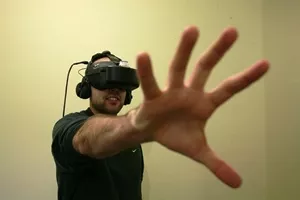Discovering Why the Future Sometimes Feels Closer Than the Past

A few years ago, Professor and Chair of the Psychology Department Andrew Ward was struck by how much the Christmas holiday that had just occurred suddenly felt so long ago.
"I wondered if there was a general tendency for events in the past to seem farther away than equidistant events in the future," says Ward, who is an authority on self-regulation and control and has conducted research on psychological barriers to negotiation and conflict resolution.
To test his hypothesis, Ward conducted campus surveys with then-psychology and economics major Eileen Earl '10 of Redmond, Wash. Respondents consistently rated dates in the future as feeling closer in time than comparable dates in the past, revealing repeated evidence of the perception phenomenon.
Ward then approached colleagues at the Universities of Chicago and Colorado, who he learned had found similar results from research they had conducted. Together with then-economics major and psychology minor Mark Chin '12 of Freehold, N.J., Ward embarked on a collaborative study to learn more. Findings from the tri-academic team were recently published in Psychological Science, a journal of the Association for Psychological Science.
Ward and Chin led the team's virtual-reality efforts to further examine time perception. Using equipment housed at Swarthmore's Perception and Cognition Laboratory headed by Professor of Psychology Frank Durgin, Post-Doctoral Research Fellow Zhi Li programmed simulated head-mounted displays for the study's 80 participants - all Swarthmore students. Once donned, participants looked into the display's virtual-reality goggles where a scene of trees, buildings, streetlights, and a fountain at the end of a road became visible. The fountain provided auditory cues that diminished in volume depending on the participant's virtual distance from it.
"Frank had explained to me what the sophisticated equipment in his lab was capable of producing," Ward says, "but, even so, what Zhi was able to create for us surpassed all my expectations." A demonstration of Zhi Li's virtual reality display is available online.
Among participants whose goggles simulated moving forward along the road, Ward and Chin found that a date three weeks in the future was rated as psychologically closer than a date three weeks in the past, replicating earlier campus survey results. For those whose goggles simulated moving backward, the phenomenon disappeared - a date three weeks in the past no longer seemed farther away than one in the future; if anything, it seemed a bit closer.
"It was as if moving backward in virtual space had, in some sense, also moved individuals back in time, and now the past did not seem quite as far away as it normally would," says Ward. "We coined the term temporal Doppler effect to describe this relationship between time and motion. Just as sound waves appear to become compressed when moving toward their source relative to moving away from it - which is known as the Doppler effect - we were able to confirm that perceptions of time show a similar phenomenon."
Led by Durgin, Swarthmore's Perception and Cognition Laboratory has spearheaded several studies with students using virtual- reality technology. For example, then-philosophy major John Phillips '11 of Gloucester, Mass., worked on understanding human biases in space perception using binocular head-mounted displays that exhibited virtual landscapes to the user. His findings were published in Attention, Perception, & Psychophysics, a journal of the Psychonomic Society. More information on students' published studies using equipment housed at Swarthmore's Perception and Cognition Laboratory are available online.



